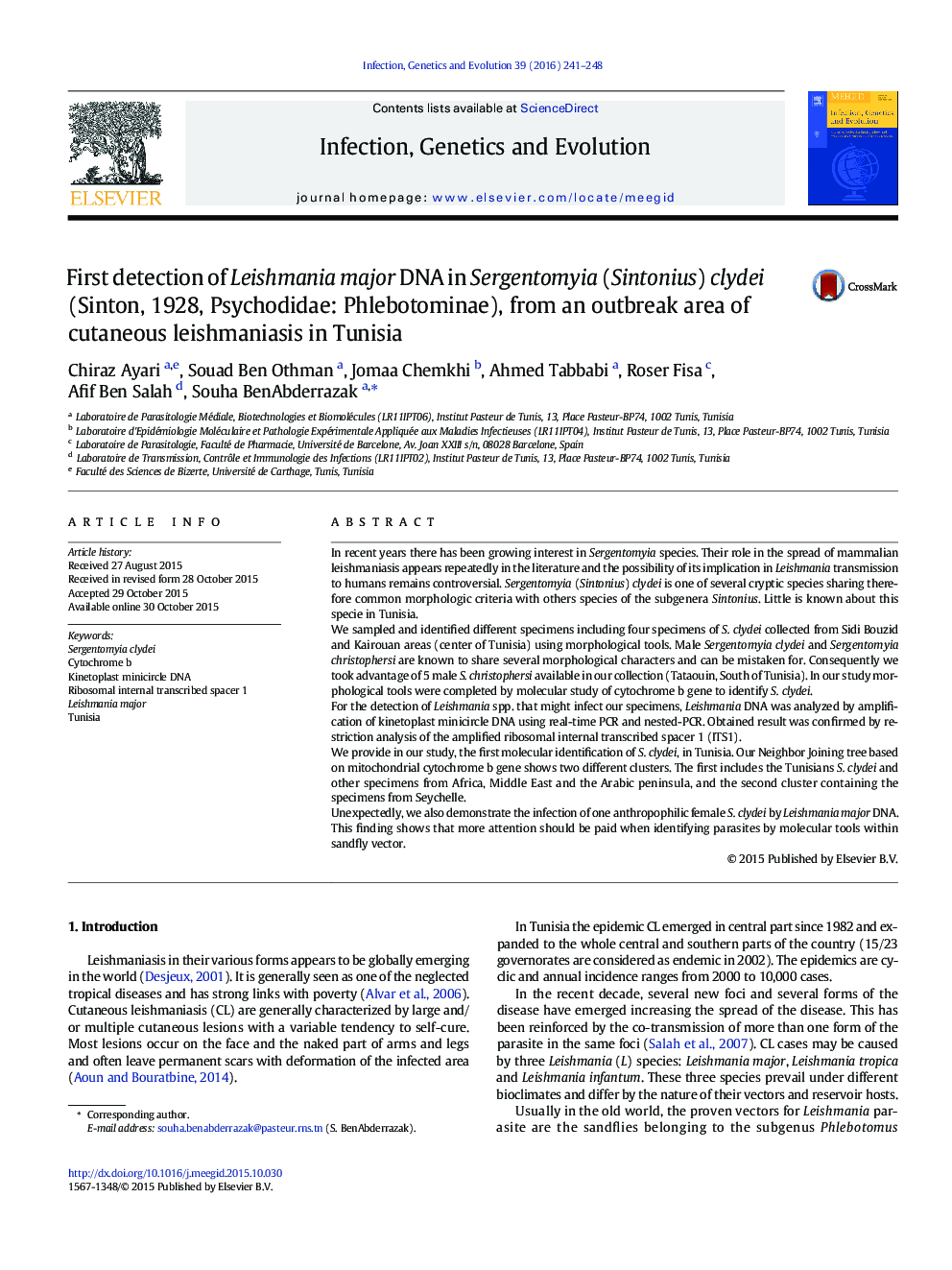| Article ID | Journal | Published Year | Pages | File Type |
|---|---|---|---|---|
| 5908759 | Infection, Genetics and Evolution | 2016 | 8 Pages |
Highlightâ¢The use of morphological tools along with molecular analysis of cytochrome b gene to unambiguously identify S. clydei.â¢The detection of L. major DNA in female S. clydei using amplification of kDNA by qPCR and nested-PCR.â¢The confirmation of obtained result by restriction analysis of the amplified ribosomal internal transcribed spacer 1 (ITS1).
ABSTRACTIn recent years there has been growing interest in Sergentomyia species. Their role in the spread of mammalian leishmaniasis appears repeatedly in the literature and the possibility of its implication in Leishmania transmission to humans remains controversial. Sergentomyia (Sintonius) clydei is one of several cryptic species sharing therefore common morphologic criteria with others species of the subgenera Sintonius. Little is known about this specie in Tunisia.We sampled and identified different specimens including four specimens of S. clydei collected from Sidi Bouzid and Kairouan areas (center of Tunisia) using morphological tools. Male Sergentomyia clydei and Sergentomyia christophersi are known to share several morphological characters and can be mistaken for. Consequently we took advantage of 5 male S. christophersi available in our collection (Tataouin, South of Tunisia). In our study morphological tools were completed by molecular study of cytochrome b gene to identify S. clydei.For the detection of Leishmania spp. that might infect our specimens, Leishmania DNA was analyzed by amplification of kinetoplast minicircle DNA using real-time PCR and nested-PCR. Obtained result was confirmed by restriction analysis of the amplified ribosomal internal transcribed spacer 1 (ITS1).We provide in our study, the first molecular identification of S. clydei, in Tunisia. Our Neighbor Joining tree based on mitochondrial cytochrome b gene shows two different clusters. The first includes the Tunisians S. clydei and other specimens from Africa, Middle East and the Arabic peninsula, and the second cluster containing the specimens from Seychelle.Unexpectedly, we also demonstrate the infection of one anthropophilic female S. clydei by Leishmania major DNA. This finding shows that more attention should be paid when identifying parasites by molecular tools within sandfly vector.
Graphical abstractDownload high-res image (160KB)Download full-size image
